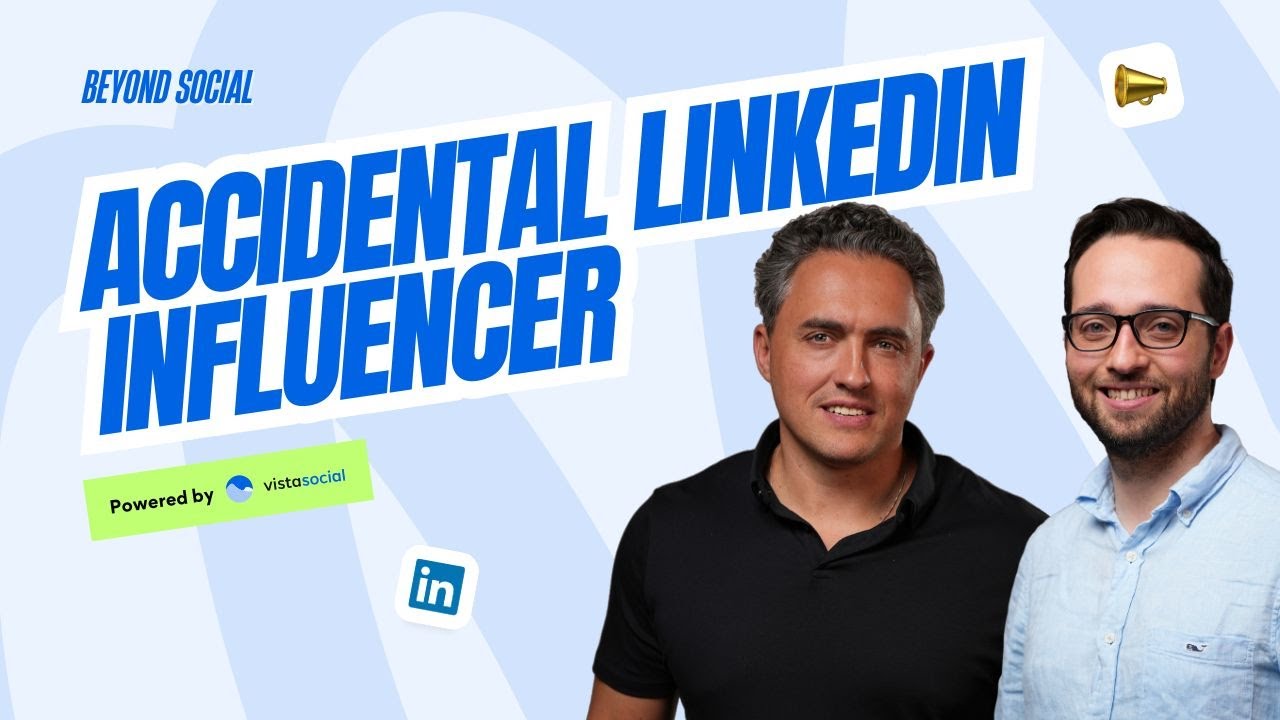New
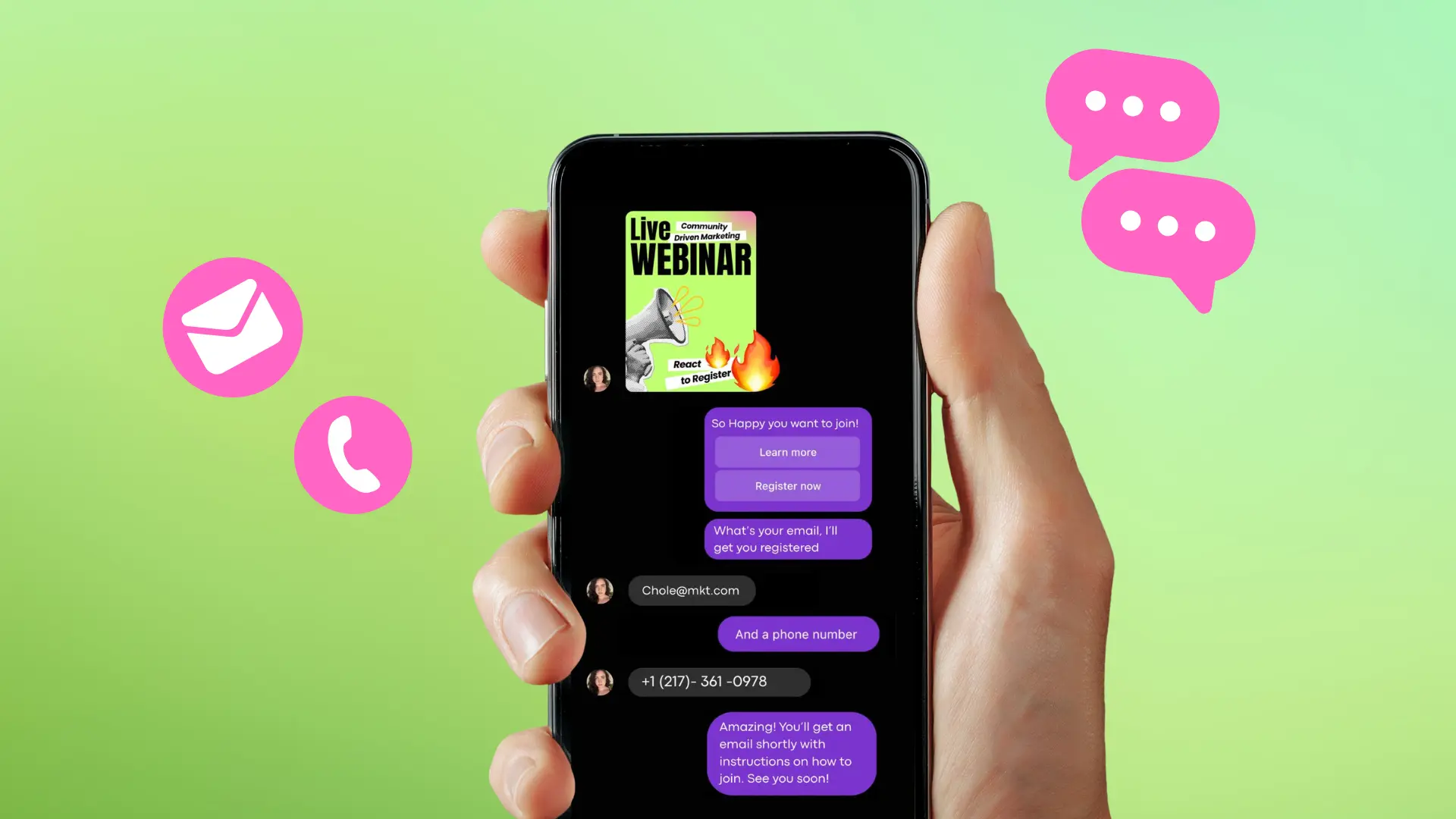
Turn Your DMs Into Lead Gen!
Learn how to collect lead data from your DMs such as email addresses, phone numbers, and more right from your social inbox. If you are not yet automating your DMs your competitors are outpacing you.

How Something Social Saved 75% of Their Time and Increased Revenue by 15%
See how a fast-growing agency improved operations, cut down hours of manual work, and unlocked new revenue opportunities with Vista Social.
New
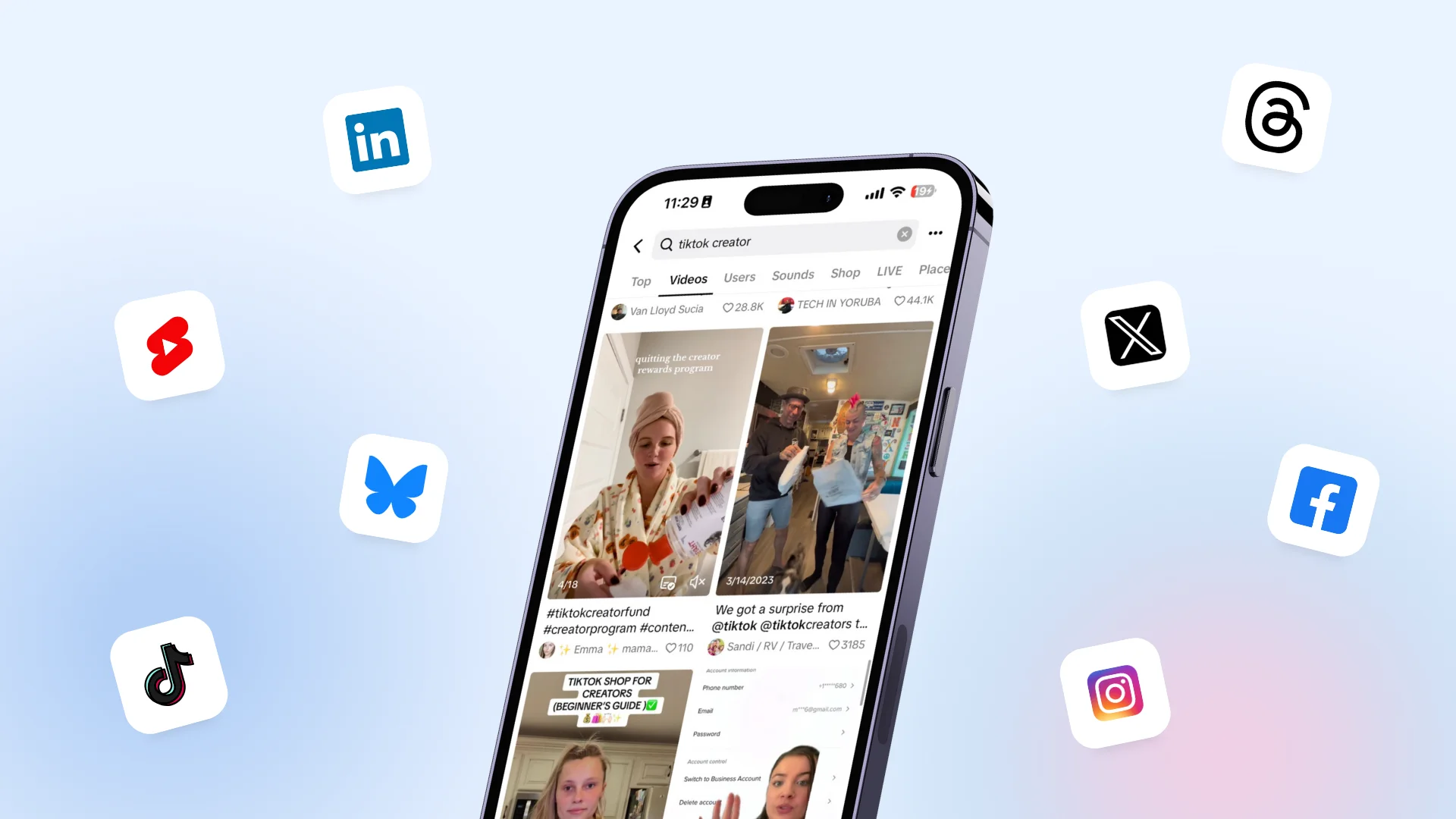
50 Unique Social Media Ideas for Consistent Content Creation
Discover 50 unique social media post ideas to engage your audience, grow your brand, and maintain a consistent content strategy with ease!
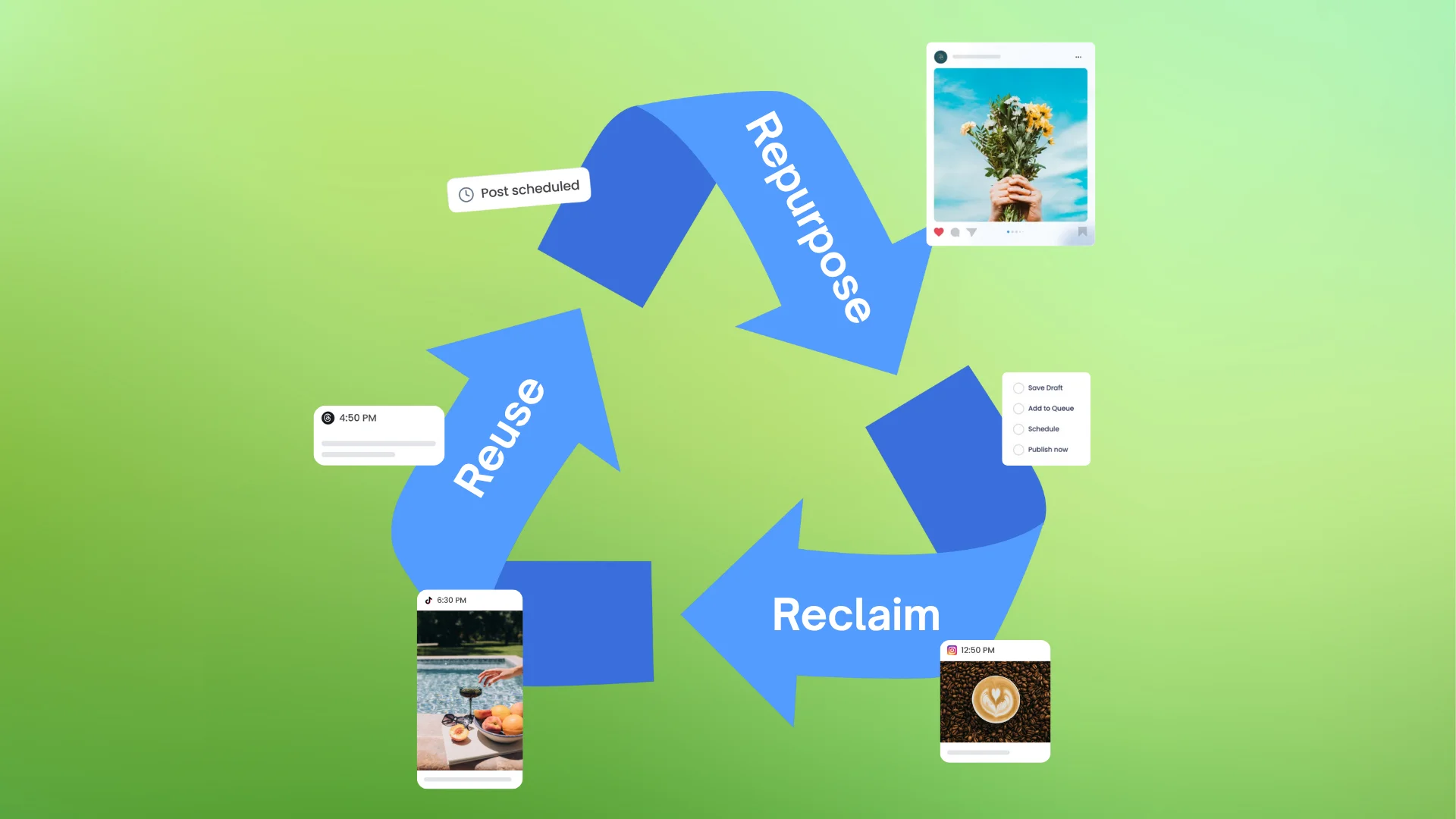
Mastering Content Reuse: The Key to a Consistent and Sustainable Posting Strategy

Table of Content

It’s possible that there’s a hidden gem in your company somewhere that comes up with a concept or comes up with an idea. I mean, we don’t want to say we’re taking the job away from the social media manager that’s responsible for the brand’s presence online, but it’s really about how can we help them.
Hey everybody, Reggie here with Vista Social’s Beyond Social podcast. I’m here with Vali today, and we’re going to try to answer a couple of questions or at least get talking about a couple of questions, which are how big should your social media team be or who should be on your social media management team? And, Vali, really I think the goal of this isn’t necessarily to say you should go out and hire a bunch of social media managers, but it’s who already on your company should be involved whether it’s an ideation [or] collaboration, and that’s what I want to dive into a little bit today.
Table of contents
Beyond the Marketing Team: Who Can Contribute?
Correct. Yeah, so not every brand can afford a large social media management team, right. Um, and there are so many different facets to managing social media and putting out content and responding to comments that it’s possible that lots of folks within other areas in your organization can certainly contribute. Whether it’s, say, contributing an idea of what the social media post could be about, commenting on an existing idea. Let’s say the company’s planning to do an announcement. Like having increasing the visibility and getting people to, let’s say, comment on that idea, provide more thoughts. Uh, let’s say you have a situation where, uh, somewhere you have a storefront or a restaurant, and the rest of maybe people on the ground taking photos and pictures, finding a way for those to get, you know, loaded into the appropriate platform to be shared later.
So all sorts of collaboration. Um, you might have, uh, processes around, uh, reviewing content, and by the way, so the more people you involve, obviously, naturally you’ll be concerned about quality of the content and, you know, who ultimately decides what’s, what? You know, what goes out? And none of that has to be sacrificed because you should implement content workflows where people create it, other people sort of approve it, and that goes for the brand. But similar ideas, we say within an agency, um, you can involve freelancers to help you with copy. Uh, you should involve clients logging in and helping you and approving content, contributing content. So the more the better, really, when it comes to social media management.
All the while, you can certainly have really strict processes as to, you know, who pushes the trigger to get the content out there. But generally speaking, the more people are participating in the process, uh, the more, at a minimum, the more content you’ll have to share and the more ideas you’ll have.
The Importance of Collaborative Tools
Yeah, absolutely. And I think when we’re talking about participation, right, getting everybody’s participation in there. If you’re not using a tool that’s going to be helpful around that, you’re going to run into some, some, some blocks really easily. Whether it’s through spreadsheets. I mean, most of these networks don’t have an easy way whether it’s TikTok or Instagram or Facebook to collaborate that seamlessly, right?
So I think it’s really important as you’re considering bringing in, I mean, your compliance team, your, your graphic designers, your copywriters, whoever that is, into the fold of the, the workflow or the life cycle of a post, that you keep in mind as you’re picking a tool that creates a collaborative environment that’s easy to use so you’re not using 15 different tools. But it’s also easy like you said, can I approve, can I make sure that the right people can collaborate but we’re not accidentally seeing posts go out that are drafted or not quite ready for prime time, right?
Balancing Access with Security Controls
Yeah, absolutely. So I think again, this is not to be confusing sort of the notion of many people involved with many people having too much access, right? So you do have, uh, a need for getting people involved but not to get to the point where people can somehow publish content get respond to comments without having enough permissions to do so. Um, and unfortunately, the social networks themselves are not very well suited to this concept and to this process because there are single-user type environments. So realistically, for an organization, uh, that wants to post natively, that is post on platforms themselves, uh, it, it’s practically impossible to implement the process where enough safety checks will be put in place to ensure that throughout that participation, uh, something that’s not supposed to go out doesn’t go out.
Um, but luckily, there are plenty of social media management, and Vista Social is certainly one of them, but, um, that’s really the way to go here is to have a platform, add all your users, assign the necessary permissions, uh, implement the necessary checks and balances.
Um, and you’re right, uh, there are concerns around, say, content ideation where, let’s say, your social media management team needs help, your marketing team needs help, and that’s where the rest of the team could potentially help. Uh, but there are more serious concerns, say, around, uh, compliance. Um, who decides ultimately and what checks and balances does the content and responses go through before landing on your, uh, pages and profiles on social media. Uh, for that purpose, you would need workflows for your content.
Um, and It would be somewhat unproductive to keep those workflows somehow offline, away from the actual ideation platform that you’re using content creation platform. Uh, so for that reason, an environment where the legal team has a say, the content team has a say, the content producers or the, uh, videographers, graphic designers, that everybody just has like a single platform form that, uh, where they can commend safely contribute content and have somebody in the end [be] the trigger. That’s really the better process in general.
Crowdsourcing Ideas from Hidden Company Gems
So I, I do want to talk a little bit about also, when we talk about participation, how crowdsourcing really ideas or concepts could, I mean, we don’t want to say we’re taking the job away from the social media manager that’s responsible for the brand’s presence online, but it’s really about how can we help them, right? How can we. I mean, we had an episode about employee advocacy, and I think, at this point, I’m not sure if it’s already live or it’s about to be live, but we talked about really the culture behind advocacy, right? An employee that loves the brand that somehow is so bought into the concept of what the brand stands for, that they’ll gladly post on their socials messaging around or even, you know, Vista Social shirt, for example, in my case.
So I think it also comes around that sometimes when we’re not thinking about crowdsourcing social, it’s possible that there’s a hidden gem in your company somewhere that comes up with a concept or comes up with an idea because they’re, they’re in, they’re in there every day, whether it’s the customer success team member, whether it’s the client facing onboarding person, salesperson, whoever it is. They know the brand, and to an extent, they understand the voice, the concept, the vision. And so don’t be afraid of empowering them to be able to come into a tool like this to help you with ideation, really crowdsourcing social ideas.
Try Vista Social for Free
A social media management platform that actually helps you grow with easy-to-use content planning, scheduling, engagement and analytics tools.
Get Started NowLeveraging Your Team’s Natural Social Media Skills
Yeah, and also the, the cost, right? So this is sort of like a hidden, um, a hidden benefit that you can get from others on your team instead of, say, hiring more into your marketing team, right? Just because you need that extra work done. Uh, well, many people, many employees are multitaskers to begin with. They participate in different projects, they get different assignments, they, uh, they handle logistical tasks as well as their job duty tasks, right? So this is no different. Uh, the, the idea that, you know, they could take part in, uh, a process of, uh, helping create content for their company, not even necessarily maybe in the creative sense, right? Because obviously graphic design or certain, that’s a skill-based kind of participation.
But, um, certainly, and you’re right, there could be really key players on your team because, mind you, all of them are already on social media. So it’s quite likely that they are pretty good at posting social messages, and they are quite good at, at the tone of voice and the emojis and hashtags, and so I would not be surprised that that’s basically free resource that you have, and you are underutilizing if you are not getting everybody involved.
But again, I think if you’re not getting somebody involved that’s maybe more a function of, um, maybe a, a tool that you’re using or not using to manage your social. Uh, obviously, if you’re doing it directly, your options for multi-user kind of environments are very limited. So I think the tooling comes into play. But again, your employees are masters of social media, and just because, listen, it’s 2024, it’s what, 18 years now? Is it, uh, when did Facebook launch? 2008, 2007. So it’s got to be like at least 15 years of Facebook, and Myspace is like what, 20 years, uh, since that got launched. So everybody is knowledgeable. You know, it’s like, say, I don’t know, you have a technology company, and you have two, two, two programmers, only to find out everybody else on your team can also code. Obviously, you would want to get that out of them too, right?
So, uh, you know, it’s, it’s, you’re right, it’s, it’s the hidden kind of, it’s a hidden technique and, uh, with a proper tooling in place, proper, proper platform. Again, you know, social media management platforms are, there are quite a few of them, and we’re just one of the players. Um, and, uh, but certainly a really good tactic for a brand and for an agency, it’s similar. An agency may be interested in finding ways to help that customer with the help of an intern, let’s say, or with the help of a, uh, of a friend or a colleague or, um, and even maybe, maybe the client themselves who wants to participate.
So with the right tool in place and with the ability to set proper permissions, this becomes a risk-free proposition, right? So this becomes a process where you take no risks, uh, and you get more value, you get more activity, and that activity eventually translates in more results, so plain and simple in my opinion.
Keeping Communication Within Your Platform
So, in my perspective, at least where, where I’m hearing, too, we talk about the tooling. Someone’s considering getting their, their entire company involved or a subset of their company involved, probably would be very important when we’re considering a tool. And, you know, we’re a little biased with Vista Social and all that, but getting people into the platform is one thing. And it’s great to have people be able to see what’s coming up or maybe be able to draft ideas. But if you’re having to communicate outside of this tool, maybe you’re having to go to Slack or going to email, whether it’s for clients adding notes. Oh, let’s change this via email. Kind of defeats a little bit of the purpose as well. The idea really is to keep as much as you can into the tool.
And so whether that’s being able to communicate through comments approve, adding notes, right? So like seeing everything that happened to that idea, right?
Yeah, absolutely. Yeah.
So, is there anything else that, I guess, your perspective, a couple of things that someone should consider when they’re looking for a tool to help them to enact something like this?
Alternative Approaches and Cultural Considerations
Yeah, so I think the, the, the idea of getting people involved, it, it, you know, it’s, it’s a fairly straightforward idea. I think maybe one of the things that we are trying to highlight in, in today’s conversation is how people that are not necessarily in the marketing space can get involved, right? And how the tools in place could help with that.
I should point out that you can easily implement something similar with, let’s say, content management system that feeds into the proper tool, right? Where, uh, obviously social media management platforms aren’t content management platforms, right? There are great workflow-oriented content management platforms that would handle a lot of the content curation workflows, and then they spit out a message, right? So, and that’s fine as well. So in that case, you would simply hook up your content management platform to an SMM tool and have that be the delivery mechanism.
In this case, potentially, you don’t necessarily need a tool, but nevertheless, you still thinking in the paradigm of how can everybody on the team contribute to the company message? And you’re right to also kind of bring up the employee advocacy. It’s a slightly different, uh, aspect of employee participation, uh, because in that situation, your employees are sharing content independently on their profiles and promoting your company that way.
But as we are talking in that podcast, one of the states, one, one of the things that we kind of try to really reiterate is the cultural, sort of the strength of the company’s culture that’s sort of driving, um, content, sort of driving participation by employees in anything the company does in this case, social media. So if you foster that kind of culture, which can include getting your employees to help out with the actual company messaging as well as subsequently being part of the advocacy and continue sharing that on their profiles, all of that is tied together. So even more reason to get everybody involved or the larger number of people and have that sort of, uh, very collaborative, uh, way of sort of operating in the space because again, social media is really all about honesty and value and, um, and to achieve that, you have to be very true to, to, to your overall company purpose, to the customers, and the way to do it is to really kind of get as grassroot as possible on this, right?
To get the actual people.
Yeah, give them a voice, right? Give them a platform to be able to engage in to help, uh, produce, produce content that’s around the brand. So, absolutely.
Awesome. Well, Vali, thank you again. It’s great, great conversation. Um, make sure you guys check out the Beyond Social podcast website, Vista Social.com/beyond social podcast for any ideas you might have, comments. If you like this episode, if you have suggestions, let us know wherever you’re consuming this content, whether it’s YouTube, Spotify, Apple Podcast, give it a like, share it around, and we’ll see you guys next week.
About the Author
Content Writer
Russell Tan is a content marketing specialist with over 7 years of experience creating content across gaming, healthcare, outdoor hospitality, and travel—because sticking to just one industry would’ve been boring. Outside of her current role as marketing specialist for Vista Social, Russell is busy plotting epic action-fantasy worlds, chasing adrenaline rushes (skydiving is next, maybe?), or racking up way too many hours in her favorite games.
Read with AI
Save time reading this article using your favorite AI tool
Summarize with AI
Never Miss a Trend
Our newsletter is packed with the hottest posts and latest news in social media.
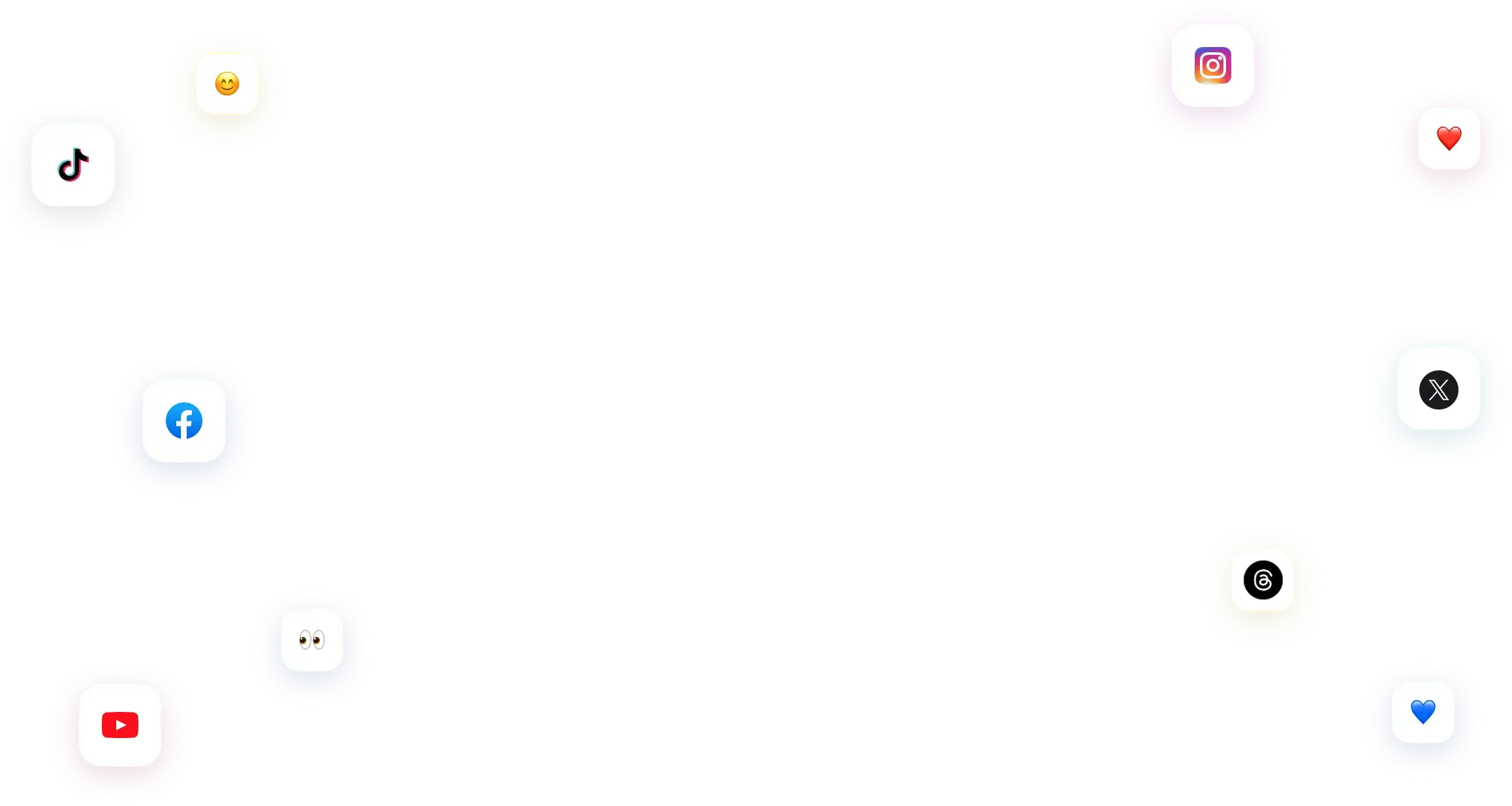
You have many things to do.
Let us help you with social media.
Use our free plan to build momentum for your social media presence.
Or skip ahead and try our paid plan to scale your social media efforts.
P.S. It will be a piece of cake 🍰 with Vista Social
Subscribe to our Newsletter!
To stay updated on the latest and greatest Social Media news. We promise not to spam you!



